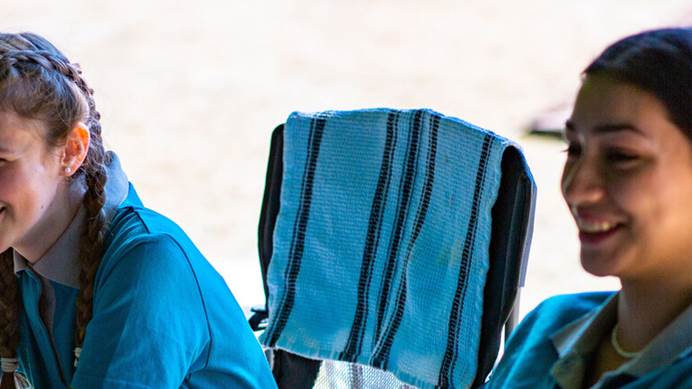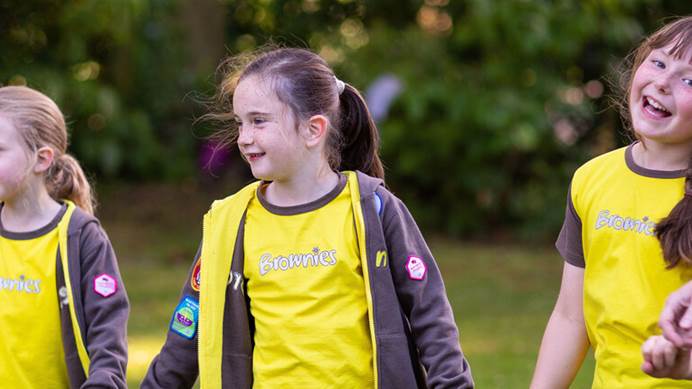Planning for incidents and emergencies at events
How to prepare for incidents and emergencies from setting up home contact systems and security measures to stewarding
This guidance is part of our toolkit for running large-scale events.
The safety and security of participants and volunteers is paramount when you’re organising an event.
This section looks at how to plan for incidents and emergencies, which is a critical aspect of event management.
Setting up a home contact system
A home contact is a volunteer who has responsibility for letting parents, carers, next of kin or anyone else relevant know if plans change or if there’s an accident or emergency.
When running an event, you’re responsible for setting up a home contact system for volunteers directly involved in organising the event, and attendees not linked to a unit. During your event a designated person must securely store emergency contact information for these volunteers/attendees.
Unit leaders bringing young members are responsible for setting up this system for their group.
For more complex events you should consider setting up a cascade system, holding the details of the main ‘home contact’ for each unit who would cascade the information to participants’ emergency contacts.
Find out more about setting up a home contact system.
Safety and security
The security of any building you might use as your venue is the responsibility of the property’s management.
You should assess existing security measures and work out if extra precautions are necessary. Larger venues will have security plans in place and will probably have their own security teams and established communication routes. They should discuss these with you.
However, you should still think about the safety and security of your venue, including:
- Do you need to keep some areas more secure than others?
- Do restricted areas need to be clearly marked?
- Are the premises for your sole use or will others be using them at the same time?
- Who will have keys, if you need them?
- Is there a risk of anyone planting something on site that wouldn’t be permitted beforehand, and planning to recover it during the event?
If you’re using a greenfield site, consider:
- Is it necessary to secure the perimeter?
- Think about the location of public footpaths and roads. Will it be necessary to get a temporary closure order from the local highways authority? Where possible, you would have an alternative route for the public, with a notice letting them know a either end of the closed route.
- If your event is overnight, do you need night security or watchtowers?
Sometimes it’s not possible to secure the perimeter. So even if the event isn’t open to the general public, they may still have access – for example if it’s taking place in a shared space like a park.
If this is the case, think about:
- Making sure attendees know to be respectful of other people in the space, like joggers or dog walkers.
- Posting signs in the area ahead of time with the event’s details.
- Training volunteers to handle questions from passers-by and to give information about the event.
- How to prevent children from wandering off with family members or strangers and how to keep the group safe in the wider space.
- Preparing some information about guiding to hand out to interested people.
- Talking to the local police for tips on keeping things secure.
Security team or stewards
Making sure you have enough stewards to cover the size and layout of your event is essential for smooth operations and safety. The number of stewards you need will depend on factors like whether the event is indoors or outdoors, weather conditions, the sale of alcohol, the event’s timing, people attending, and key areas like exits, access points, car parks, and site boundaries.
The Purple Guide (a guide to health, safety and welfare at outdoor events - link opens in new tab) can help you work out how many security staff you legally need, the level of experience they need, and any additional licences required. Contact your country or region to check if they have a subscription you can access.
Stewards should be easy to identify. They should wear high-visibility vests, jackets, or event-branded clothing, with name badges or ID cards if necessary. They need to be well-prepared, receiving duty rosters, event schedules, and venue maps in advance, along with a briefing at the start of each day.
Effective communication is key. This may involve 2-way radios, mobile phones or volunteers tasked with relaying messages. Think about having emergency signal codes for discreet messaging.
In the UK, an Ofcom licence is generally needed for 2-way radios unless they fall under the PMR446 (licence-free) standard. Check whether your event’s communication set-up needs a licence.
If volunteers are expected to carry and use their personal mobile phones for event communication, confirm whether your insurance covers loss, damage or theft.
Other important considerations include making sure you have enough stewards and security personnel to handle unexpected situations. You should confirm stewards are trained to safely direct attendees away from danger if there’s an incident.
Give stewards access to water, food and rest areas. Rotate shifts to avoid tiredness and make sure stewards get breaks.
Training
Consider providing training on:
- Evacuation procedures/your emergency plan.
- Using your communication system/codes you have in place.
- Resolving conflicts.
- Any specific role training, for example giving night patrols guidelines such as staying in pairs, keeping shifts short, and carrying torches.
Entrances and exits
Well-managed entrances and exits are important in ensuring smooth flow and safety in any space.
- All signage directing people to and from your site must be clearly visible, easily understood and lit in the dark, if possible. For any signage on public highways, you’ll need specific approval from the local highways authority.
- If it’s a greenfield site, consider separate entrances and exits for pedestrians and vehicles.
- Think about the floor surface. Does it need extra protection like mats to reduce the risk of slips and trips?
- Think about moving doors, and gates and barriers that could swing in the wind. They may need to be fixed with hooks or another means of restraint. Do people involved in managing the event need to be instructed on how to use these?
Proactively checking the details below will also help create an inclusive and welcoming event for all attendees:
- Are volunteers trained to help guests who need escorting from entrances and exits?
- Are there accessible parking options (disabled parking bays, for example) within a reasonable distance of the venue?
- Are entrances and doorways wide enough for wheelchairs, mobility scooters or other assistive devices?
- Are lifts available if needed?
- Are pathways clear of obstacles? Consider checking the size of mobility aids to ensure smooth access and movement.
- Does the venue have ramps or automatic doors for easy access?
Managing attendees
It's important to have a clear system for identifying different groups of people. Consider:
- Using event passes, hand stamps or wristbands for entry. Don’t use badges with girls’ names or personal details.
- Providing a briefing to all attendees, with a quick orientation about emergency procedures and event rules.
- Setting up a way to check people in and out. This helps control who’s on site and prevents unauthorised visitors from sneaking in. Don’t forget to keep a count if you have capacity limits. For example if the event is ticketed, you can manage this by checking and controlling the tickets.
- If different areas have different capacity limits, you’ll need to have control measures in place at each entrance point.
- If someone’s only supposed to be at your event for a short time (like suppliers or people coming for part of the event), make sure they only have access for as long as they’re meant to.
- Do you need designated people to meet and guide different groups?
- When someone leaves, make sure they give back their pass. This helps you keep track of how many people are still on site, which is crucial for safety reasons, like in case of an emergency evacuation.
Barriers and fencing
Barriers help with security and control crowds. Think about where you might need them, especially in high-traffic areas like stages or spots with live entertainment. Whether you need perimeter fencing depends on your event’s location and type.
There are many barrier options with a range of heights, types and strengths:
- Stake-and-tape.
- A line of marshals.
- A-frames.
- Straight barriers.
- Curved barriers.
Speak to barrier hire companies – they’ll be able to help you choose what’s best for your event.



